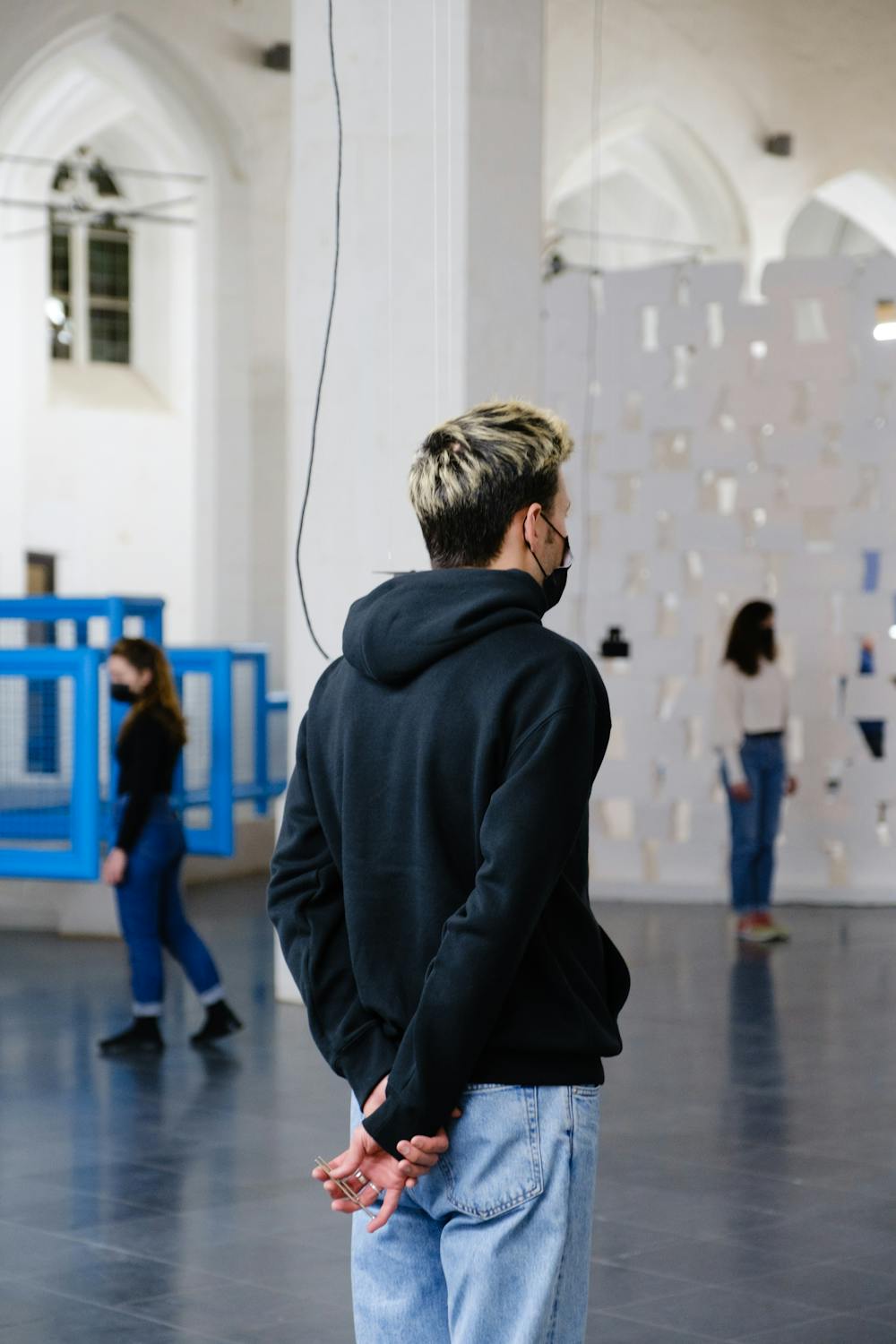For John Cage’s Rolywholyover A Circus (1993) at MOCA Los Angeles, this “turntabilist’s” chance operations were used daily to select and reposition artworks culled from MOCA’s collection. Some years later, artists started finding inspiration in music mashups. In 1999, Ricci Albenda worked with nearly a dozen artists over eight weeks to create Answer Yes, No or Don’t Know, four consecutive mashups of artworks for Andrew Kreps Gallery in New York City. In Los Angeles, three different artists re-installed the same solo show weekly as part of Re-Mix at Popular Mechanics. Similarly-structured exhibitions have been in play ever since.

At first glance, exhibition maker Prem Krishnamurthy’s artwork Endless Exhibition (2018 - ∞), which Kunsthal Gent acquired as part of its institutional framework, resembles yesteryear’s mashups, though its creator’s motivations are wildly different. His approach rather ‘surveys the overproduction, mass consumption, and fleeting attention span of the contemporary artworld’. So long as exhibited artworks can be disassembled, repurposed (or even recycled) or exhibited elsewhere, his objectives remain in reach. His artwork Endless Exhibition is an open system that is replicable ad infinitum. By contrast, Kunsthal Gent’s quasi-permanent Endless Exhibition (2019-∞) evolves, yet it is a closed system, limited to artworks that complement both extant artworks and the monastery. Given enough space, this exhibition could reappear elsewhere (Hamburger Bahnhof comes to mind). Once this show fills up, Endless Exhibition either ends or cycles anew. Endless Exhibition thus builds on Friedrich Kiesler’s visionary drawings of ‘endless space’ and models for a perfectly-lit ‘endless house’.
Endless Exhibition launched with Krishnamurthy’s ‘curatorial-manifesto-as-artwork’; architect Olivier Goethals’ Spatial Intervention KG01, a new entrance plus a superlative three-storey structure, affording both work and exhibition spaces; Steve Van den Bosch’s stretched audio piece, neon doodle outdoors and future artwork proposal plus Thomas Min and Egon Van Herreweghe’s witty, yet domineering sculpture Crisis of Masculinity. Originally a giant, three-sided metallic fence inspired by Muscle Beach and bolted into concrete, it has since been sliced and its blue segments get slid around to accommodate incoming artworks.

Krishnamurthy’s exhibition formula allows Kunsthal Gent to select curators and/or artists, whose unusual loan conditions reflect the way such huge things warrant constant reshuffling. For example, Jesse Jones’ Syllabus, a massive transparent mesh curtain featuring feminist Silvia Federici’s left arm, hangs from the ceiling and doubles as architecture, since the artist requests staff to encircle monthly activist reading groups inside. Charlotte Stuby’s textile banner Keepsake hangs inside or out. The same goes for Housebroken, Nina Beier’s fierce “guardian lions” that can be repositioned. Using the ground floor as her film studio, Joëlle Turlinckx reshot and edited 200 hours of video shot during her Dia:Beacon performance.
The most recent insertion is Felix Kindermann’s Interplays. His exhibition title conveys the challenges and rewards of seamlessly slipping into this mashup of extant artworks by 14 artists. Two years into the game, I imagine joining Endless Exhibition is a bit like hopping aboard a moving merry-go-round or jump-roping Double Dutch. To create Choir Piece (Virtual Edit, Kunsthal Gent Version) (2019/2021 - ∞), his long-term loan to Endless Exhibition, he recorded the Ghent Singers traversing the monastery while performing Natalie Dietterich’s Composition for Separated Musicians (2019), an open system interpreted by 16 performers. Since Choir Piece captures autonomous singers interacting with one another amidst architecture inhabited by stuff, it is already a mashup, yet this particular version is a mashup of a mashup, since a computer algorithm randomly moves each singer around a virtual field and then directs each speaker dangling from the vault to broadcast those voices within its orbit. In this sense, Choir Piece springs from each voice’s coordinates just as Endless Exhibition reboots whenever artworks move in, out or about.

With pandemic restrictions in play, only three singers were allowed to interact with the voices during the vernissage. This version sounded remarkably vivid, perhaps because we often experience Ghent Singers alone or in small clusters when they enact Choir Piece. The opportunity to experience voices from beneath and above added another dimension. Absent singers occupying our aural field, it’s no wonder Kindermann opted to arrange 3D prints of several singers’ shoes in clusters to evoke soloists, duets, and even a quartet. Apparently, the process of scanning and 3D-printing their shoes in polylactic acid compounds “digital noise,” thus exacerbating imperfections. Such flaws inherent sculptures arising from data complement Choir Piece’s singers’ having to constantly modulate their voices, in order for music to emerge from noise.
With Interplays, Kindermann has one foot in Endless Exhibition and another in the Pavilion, where a single speaker currently reverberates inside its “mini-white cube.” Nearby, a tower of stackable boxes displays several black t-shirts and sweatshirts bearing linguistic formulas such as “(p) + ‘don’t’ + (v),” which he uses to generate Choir Piece’s text. Effectively action steps, I imagine him also using this algorithm to envision its future iterations.
What makes Endless Exhibition especially interesting is the way architects, artists, citizens, curators and graphic designers have infused this expansive site with their unique demands and skill sets. I remain hopeful that one day this mashup will achieve gender parity on par with Kunsthal Gent’s overall programming. If left to spread in unpredictable directions, the narcissism at the heart of today’s “crisis of masculinity” will inevitably block such open doors.